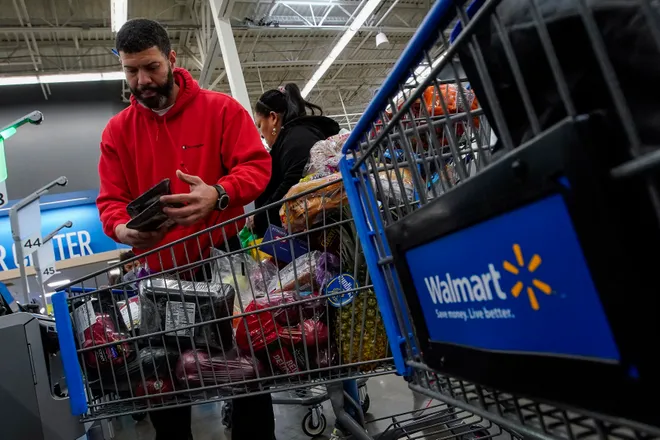Did grocery chains take advantage of COVID shortages to raise prices? FTC says yes
Large grocery store chains exploited product shortages during the pandemic by raising prices significantly more than needed to cover their added costs and they continue to reap excessive profits, according to a Federal Trade Commission report.
The grocery giants also used their marketing power and leverage to widen their advantage over smaller competitors, according to the report, titled “Feeding America in a Time of Crisis.”
“As the pandemic illustrated, a major shock to the supply chain have cascading effects on consumers, including the prices they pay for groceries,” FTC Chair Lina Kahn said in a statement. “The FTC report examining US grocery supply chains finds that dominant firms used this moment to come out ahead at the expense of their competitors and the communities they serve.”

How much have grocery prices risen?
In 2021, food and beverage retailer revenue increased to more than 6% above their total costs, compared with a peak of 5.6% in 2015, the FTC report says. And during the first three quarters of 2023, profits increased further, with sales topping costs by 7%.
Protect your assets: Best high-yield savings accounts of 2023
“This casts doubt on assertions that rising prices at the grocery store are simply moving in lockstep with retailers' own rising cost,” the report said. The elevated profits, it added, “warrant further inquiry" by the FTC and policymakers.
The Food Marketing Institute, which represents large food retailers and wholesalers, would not comment on the report, saying it needs more time to review the findings.
The National Grocers Association, which represents smaller, independent food retailers, praised the study.
“This study confirms what independent grocers and their customers experience firsthand: dominant national chains or so-called 'power buyers' are abusing their immense economic power to the detriment of competition and American consumers," NGA CEO Greg Ferrara said in a statement..
The report stems largely from orders the FTC issued in 2021 for nine large firms - including Walmart, Kroger, Procter & Gamble and Tyson Foods - to provide detailed information about their business practices. But the profit margin data came from publicly available grocery retail patterns and it’s not clear to what extent it applies to those companies, the report said.
Separately, the FTC is challenging Kroger's proposed acquisition of Albertsons, saying the merger would decrease grocery store competition and hike prices for consumers.
How did COVID affect food prices?
During the COVID-19 pandemic, products such as toilet paper, meat, milk and hand sanitizer were often in short supply and prices soared. Grocery companies blamed supply-chain bottlenecks in the U.S. and overseas resulting from sharp demand spikes during lockdowns as well as COVID-related worker absences at factories, warehouses and ports. Inflation more broadly hit a 40-year high of 9.1% in mid-2022 but has recently slowed to about 3% as product and labor supply shortages have eased.
The FTC report suggests the grocery companies were also price-gouging consumers.
The study also found that big food retailers:
∎ Imposed strict delivery requirements and threatened fines if they didn’t comply. That widened their advantage over smaller rivals and “may create an opportunity for some firms to entrench their power,” the report said.
∎ Explored whether to build their own manufacturing capacity or buy producers. By consolidating already concentrated markets, such mergers could harm smaller competitors, the study said.
Disclaimer: The copyright of this article belongs to the original author. Reposting this article is solely for the purpose of information dissemination and does not constitute any investment advice. If there is any infringement, please contact us immediately. We will make corrections or deletions as necessary. Thank you.







